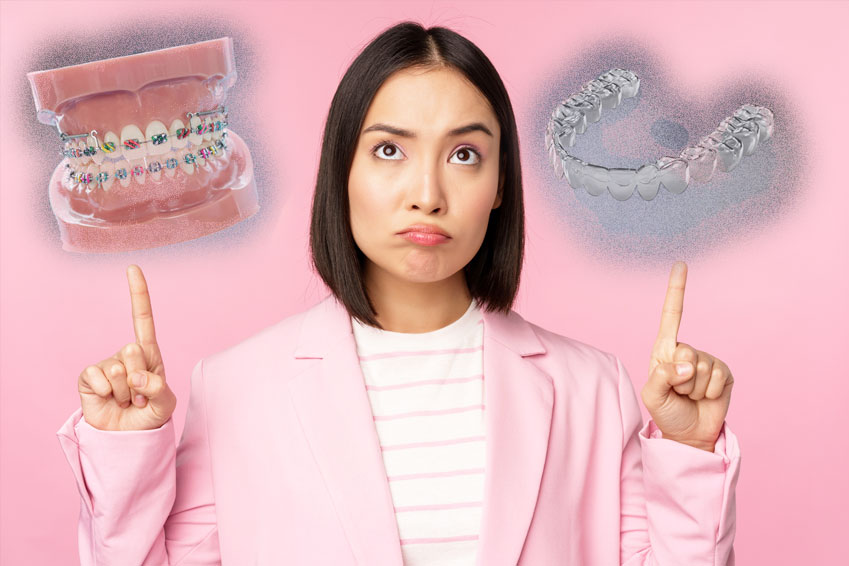With the growing number of orthodontic treatment options available today, patients and practitioners can choose from several kinds of aligners. Which type is best for you?
So many braces, so little time! Naturally, the decision which system to use must be made by you and an experienced professional orthodontist and/or dentist. So much depends on the nature and severity of your condition, which may include…
- Overbite/deep bite
- Overjet
- Underbite
- Spacing issues
- Open bite
- Crowding issues
- Crossbite issues
- Teeth straightening
- A combination
In addition, your social needs, comfort and other factors play a role in which method you and your practitioner (hopefully, us) decide upon. Here are some general choices but note, there are many more…
Traditional Metal Braces
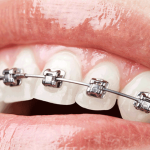 Traditional metal braces are the ones you automatically picture when someone says “braces.” Stainless steel brackets are cemented to your teeth and connected to archwires with colorful elastic rubber bands. Sturdy and reliable, these braces are capable of handling tooth and bite problems that other types of braces simply can’t.
Traditional metal braces are the ones you automatically picture when someone says “braces.” Stainless steel brackets are cemented to your teeth and connected to archwires with colorful elastic rubber bands. Sturdy and reliable, these braces are capable of handling tooth and bite problems that other types of braces simply can’t.
Self-Ligating Braces
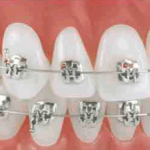 Much like traditional braces, self-ligating braces use brackets cemented to the teeth and an archwire. However, instead of elastics, a specialized clip is used, resulting in less friction on the tooth. Many orthodontists use the Damon System of self-ligating braces, which offers both traditional metal and clear brackets.
Much like traditional braces, self-ligating braces use brackets cemented to the teeth and an archwire. However, instead of elastics, a specialized clip is used, resulting in less friction on the tooth. Many orthodontists use the Damon System of self-ligating braces, which offers both traditional metal and clear brackets.
Ceramic Braces
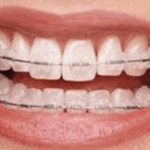 Ceramic braces use brackets made of clear ceramic instead of metal. Also known as clear braces, these braces are less noticeable than their metal counterparts. They’re also more brittle, which means they aren’t appropriate in all situations.
Ceramic braces use brackets made of clear ceramic instead of metal. Also known as clear braces, these braces are less noticeable than their metal counterparts. They’re also more brittle, which means they aren’t appropriate in all situations.
Lingual Braces
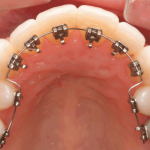 Lingual braces are traditional braces placed on the back side of the teeth. While this is appealing for cosmetic reasons, it can be more difficult for you to keep your teeth clean and for your orthodontist to make adjustments. You may also notice issues with your speech.
Lingual braces are traditional braces placed on the back side of the teeth. While this is appealing for cosmetic reasons, it can be more difficult for you to keep your teeth clean and for your orthodontist to make adjustments. You may also notice issues with your speech.
Clear Aligners
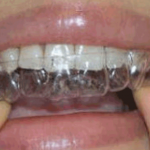 Clear aligners replace traditional brackets and arch wires with a series of computer generated acrylic trays. Each tray is worn for a few weeks at a time. Although the technology is improving, clear aligners can’t treat all orthodontic problems, and they usually require longer treatment times. But they have one definite advantage: unlike all the other types of braces, clear aligner trays are removable.
Clear aligners replace traditional brackets and arch wires with a series of computer generated acrylic trays. Each tray is worn for a few weeks at a time. Although the technology is improving, clear aligners can’t treat all orthodontic problems, and they usually require longer treatment times. But they have one definite advantage: unlike all the other types of braces, clear aligner trays are removable.
Patients aren’t restricted from sticky or hard foods and can floss easily. Practically invisible, they’re appealing if you don’t want to look like you’re wearing braces. Some brands of clear aligners, is available for teens and adults.
In recent years, mail order clear braces have become more popular as a convenient, lower-cost solution, but it is acknowledged that proper measurement and treatment of crooked teeth require careful monitoring by an experienced professional. So we do not recommend them.
Ask Your Dentist, Make A Choice – Together!
Finding the best type of braces for you or your child involves considering your orthodontic needs and your preferences regarding appearance. Complex orthodontic problems may require traditional metal or self-ligating braces, but patients with simpler issues will likely have the option of selecting more discreet styles like ceramic braces or clear aligners. Speak with your dentist first.
If you are interested in improving your smile, make an appointment with us today. Together, we can determine how best to brace yourself for the future! 🙂

